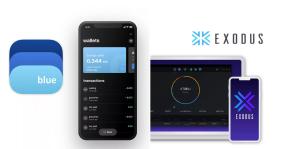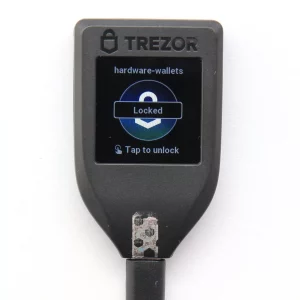The Liquid Network, launched by Blockstream in 2018, is a side chain solution built on top of Bitcoin. It functions as a separate blockchain but is pegged to the main Bitcoin blockchain. Liquid Network aims to address limitations of Bitcoin’s scalability and privacy. Therefore, it facilitates faster and more confidential transactions among participating exchanges and traders.
Liquid Network Meaning
Liquid BTC or Liquid Bitcoin (L-BTC) is the native asset of the Liquid Network, serving as a 1-to-1 representation of Bitcoin within the Liquid sidechain. It exists on a separate blockchain called the Liquid Network. L-BTC is verifiably backed by real Bitcoin held on the main Bitcoin blockchain. There’s a 1:1 peg, meaning for every L-BTC in circulation, there’s 1 BTC locked away on the main chain.
Think of it like converting your dollars to store credit at a department store – it’s the same underlying value but allows for faster, private, and more convenient transactions within that specific network.
The operational mechanics of Liquid Network are designed to address the inherent limitations of the Bitcoin network, particularly in terms of transaction speed and privacy. Transactions on the Liquid Network are processed much quicker than those on the Bitcoin network. Liquid blocks are added every minute with precision, contrasting Bitcoin’s probabilistic 10-minute block times.
Moreover, just two confirmations are adequate to finalize the settlement of a transaction. This expedited settlement is made possible by employing a federation of trusted members, a group of geographically dispersed cryptocurrency businesses, to validate transactions, a departure from Bitcoin’s proof-of-work mining system.
Notably, Liquid transactions offer enhanced privacy features, such as confidential transactions. Only the sender and receiver are privy to the amount being transferred on the Liquid Network.
Blockstream Explorer is a tool you can use to view information about transactions happening on the Bitcoin and Liquid blockchains. It’s essentially a search engine for these blockchains.
Liquid Network Peg-In
Liquid Network peg-in is the process by which you initiate transactions on the Liquid Network. This involves locking up your Bitcoin on the main Bitcoin blockchain in exchange for an equivalent amount of Liquid Bitcoin (L-BTC) on the Liquid sidechain. This involves depositing Bitcoin into an address generated by the Liquid Network. Once this deposit is confirmed, you are issued an equivalent amount of L-BTC, which allows you to transact within the Liquid Network.
Liquid Network Peg-Out
To retrieve your Bitcoin back from the Liquid Network, you must undergo a process known as Liquid Network peg-out. This entails depositing your L-BTC back into the Liquid Network before the Bitcoin is returned. It’s worth noting that currently, the Liquid Network only facilitates the return of Bitcoin to verified addresses, adding another layer of security and verification.
How to Get Liquid Bitcoin
Acquiring Liquid Bitcoin (L-BTC) can be accomplished through various methods. One approach is to swap Bitcoin for Liquid using platforms like SideSwap and Bisq. Alternatively, you can purchase L-BTC directly with fiat currency through wallets such as Aqua or exchanges like Bitfinex, Peach Bitcoin, Bull Bitcoin, and BTSE. Additionally, borrowing L-BTC against Bitcoin is possible through services like Lend at Hodl Hodl. Moreover, you can convert Lightning to Liquid using platforms such as Boltz or Coinos.
Another avenue to acquire Liquid is through a Peg-In process, which requires both a Bitcoin full node and a Liquid node for secure completion. During a Peg-In, you send their Bitcoin to a specified address and receive an equivalent amount of L-BTC on the Liquid Network in return.
Liquid Bitcoin vs Lightning vs Bitcoin on Chain
The Liquid Network and the Lightning Network both aim to improve Bitcoin’s scalability and privacy, but they do so in different ways. While Liquid Network relies on a federated model and Liquid side chain, Lightning Network employs off-chain payment channels to enable instantaneous micropayments. Lightning Network doesn’t currently support asset issuance. On the other hand, Bitcoin on-chain transactions remain the most secure but are slower and less private compared to both Liquid and Lightning.
Read also: Liquid Networks vs Lightning Network
Benefits of Liquid Network
The Liquid Network offers these benefits:
- Faster Transactions: Liquid Bitcoin transactions are faster settlement times compared to Bitcoin’s main chain.
- Enhanced Privacy: Confidential transactions and the ability to issue assets provide improved privacy for users.
- Covenants: In the context of Liquid Bitcoin, a Covenant is a type of multi-signature address that allows for a more flexible and customizable spending permissions. It allows for multiple signers, each with specific permissions, to control the spending of the funds held in the address.
- Interoperability: Liquid Network facilitates interoperability between exchanges and enables the issuance of new digital assets.
Drawbacks of Liquid Network
Despite its advantages, there are a few drawbacks. They include:
- Centralization: Liquid Network’s federated model relies on a group of trusted validators, which some argue compromises decentralization.
- Trust Requirement: Users must trust the functionaries selected by participating members to validate transactions.
- Limited Adoption: As a relatively new technology, Liquid Network’s adoption is not as widespread as Bitcoin itself.
List of Liquid Network Wallets
Popular Liquid BTC wallets include the following:
- Green Wallet (mobile/desktop wallet)
- Aqua (mobile wallet)
- Walby (mobile app)
- Coinos (web wallet)
- Marina (browser extension)
- Spectre (desktops wallet)
- SideSwap (mobile and desktop wallet and swap platform)
- Blockstream Jade (hardware wallet)
- Ledger (hardware wallet)
List of Exchanges and Platforms Supporting Liquid Network
The following are some of Bitcoin exchanges and platforms that support the Liquid Network:
- Bisq (exchange)
- Bull Bitcoin (exchange)
- Bitfinex (exchange)
- BTSE (exchange)
- Boltz (swap platform)
- Hodl Hodl (exchange)
- Robosats (exchange)
- Peach Bitcoin (exchange)
- Lend at Hodl Hodl (peer to peer Bitcoin lending)
- BTCPay Server (payment processor)
Is Liquid Network a Solution?
The Liquid Network presents a practical solution to the scalability and privacy challenges faced by the Bitcoin network. By offering faster transactions and enhanced privacy features, it stands as a significant advancement in the realm of Bitcoin transactions.
Furthermore, Liquid Bitcoin offers a feature called Covenant that enhance transaction control beyond what’s possible on the main Bitcoin network. Covenants offer multisignature-like control by requiring specific signatures for spending, similar to multisig wallets. Additionally, they incorporate timelocks to restrict the use of L-BTC to a specific timeframe, and enable conditional spending to ensure L-BTC is used only for designated purposes within the Liquid ecosystem.
However, Liquid BTC also introduces certain trade-offs, such as centralization and trust requirements. Unlike Bitcoin’s main chain, which is fully decentralized, the Liquid network operates on a federated model. This means that a group of trusted entities (e.q., exchanges, miners, blockchain companies, etc.) rather than a single centralized authority, manage the network by collectively validating and securing transactions.
Nevertheless, with continued development and adoption, the Liquid Network could play a pivotal role in shaping the future of Bitcoin transactions, offering users a more efficient, private, and secure means of conducting transactions on the blockchain.



























